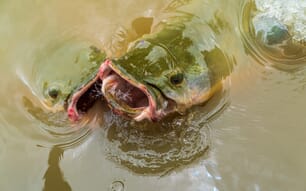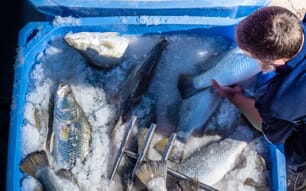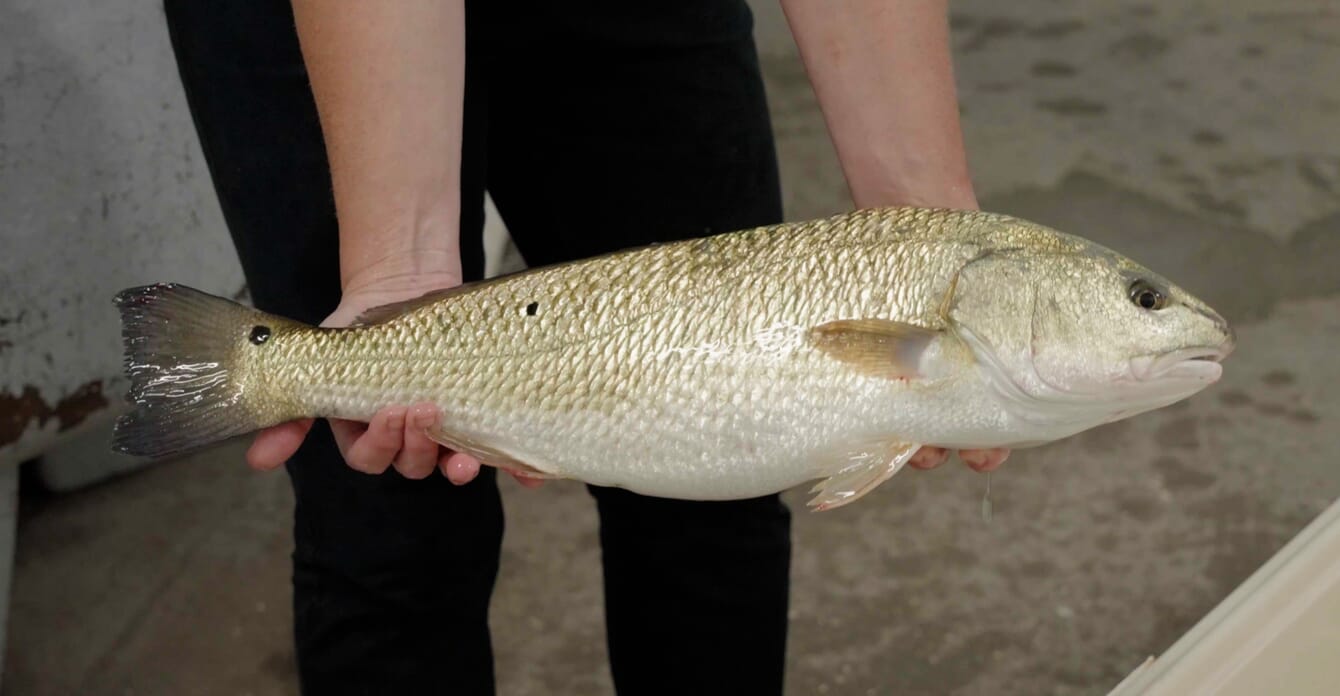
Pine Island Redfish is set to farm red drum (Sciaenops ocellatus), or redfish, in a modern RAS facility in southwest Florida © Pine Island Redfish
Over the past few decades, a number of aquatic species have been raised with mixed success in commercial RAS facilities, including salmon, tilapia, kingfish, arctic char, eels, shrimp and African catfish. Now, another species may soon be added to that list. Pine Island Redfish has acquired a nearly 150 acre property to farm red drum (Sciaenops ocellatus) in a modern RAS facility after review and approval by all relevant local, state and federal agencies.
An integral part of the US seafood scene
The red drum, or redfish, occurs naturally in North American waters – from Veracruz, Mexico to as far north as Massachusetts. It has also been widely introduced for pond and cage culture throughout the tropics and sub-tropics. The redfish belongs to the Sciaenidae family, which includes a number of species, many of which are highly prized by consumers. Some, like the large yellow croaker (Larimichthys crocea), the meagre (Argyrosomus regius), the yellow drum (Nibea albiflora) and the mulloway (Argyrosomus japonicus) have already been shown to be amenable to culture in various production environments. Ongoing research has demonstrated that many other sciaenids may also be well-suited to aquaculture.
Research on spawning and fingerling production of S. ocellatus began more than four decades ago, as a component of stock enhancement efforts in several states in the southeastern US. Consumer interest in this species increased greatly in the region in the mid 1980s as a result of the temporary popularity of Cajun cuisine. As a consequence of widespread overfishing, subsequent moratoria on commercial red drum harvests from federal waters led researchers and entrepreneurs to devote considerable resources to the development of grow-out techniques for the species. Experience has since shown that successful red drum culture requires consistently moderate-to-warm climatic conditions, which explains the current geographical distribution of culture operations around the globe. Many of these facilities, however, are vulnerable to tropical storms, typhoons and hurricanes.
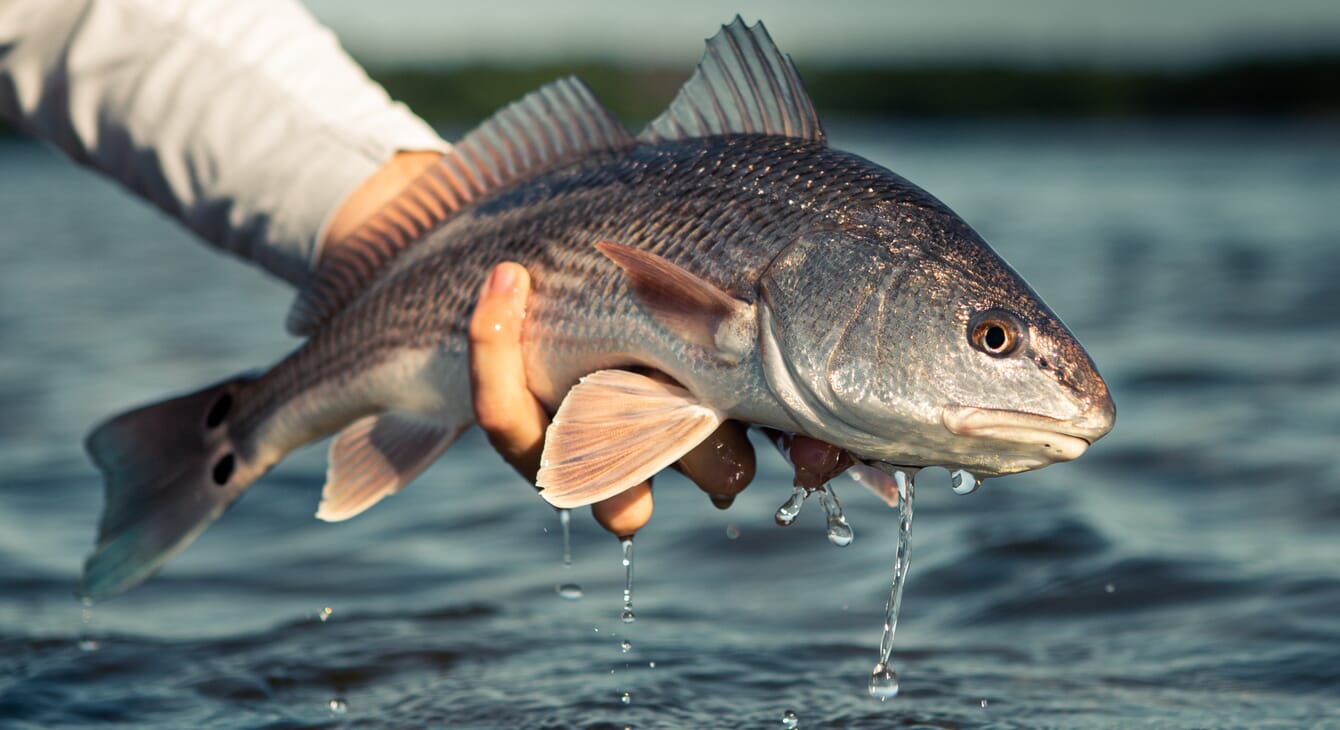
Historically the species was so valued for its clean taste and ease of preparation that the wild fishery could not support the demand and the species had to be protected
Although red drum maturation and spawning are dependent on cold water temperatures followed by gradual seasonal warming, the species is particularly vulnerable to abrupt drops in temperature. Cold-related die-offs of juvenile red drum in inshore habitats are common occurrences in wild populations, and similar cold-related losses are typical in outdoor culture facilities in temperate regions. However, some 30 years ago researchers at Texas A&M University indicated that S. ocellatus was a promising candidate for indoor culture, both biologically and economically. And, as is not uncommon in the realm of aquaculture, it would appear that – in the interim – technology may have caught up with the opportunity.
The evolution of RAS technology
Current RAS technology makes it possible to grow almost anything, almost anywhere, be it tilapia in Ontario or Atlantic salmon in Florida. Nonetheless, for economic success and survival (ie profitability) with RASs it’s preferable to define the ideal site and then try to find the most similar location available. Groundwater supplies must be evaluated based on costs (especially projected drilling and pumping costs), chemical profiles (including salinity where appropriate), temperature, and seasonal variations in quantity and quality. Regional climate should be evaluated for each month of the year in terms of temperature, precipitation, humidity, prevailing winds and solar radiation. Existing drainage and potential for flooding are also important considerations. And although red drum tolerate a wide range of salinities, they exhibit the best growth and survival at intermediate levels. Sourcing high-quality water supplies and managing disposal of solids are both generally more complicated for saltwater RAS, but in this case the Pine Island team has dotted their i’s and crossed their t’s.
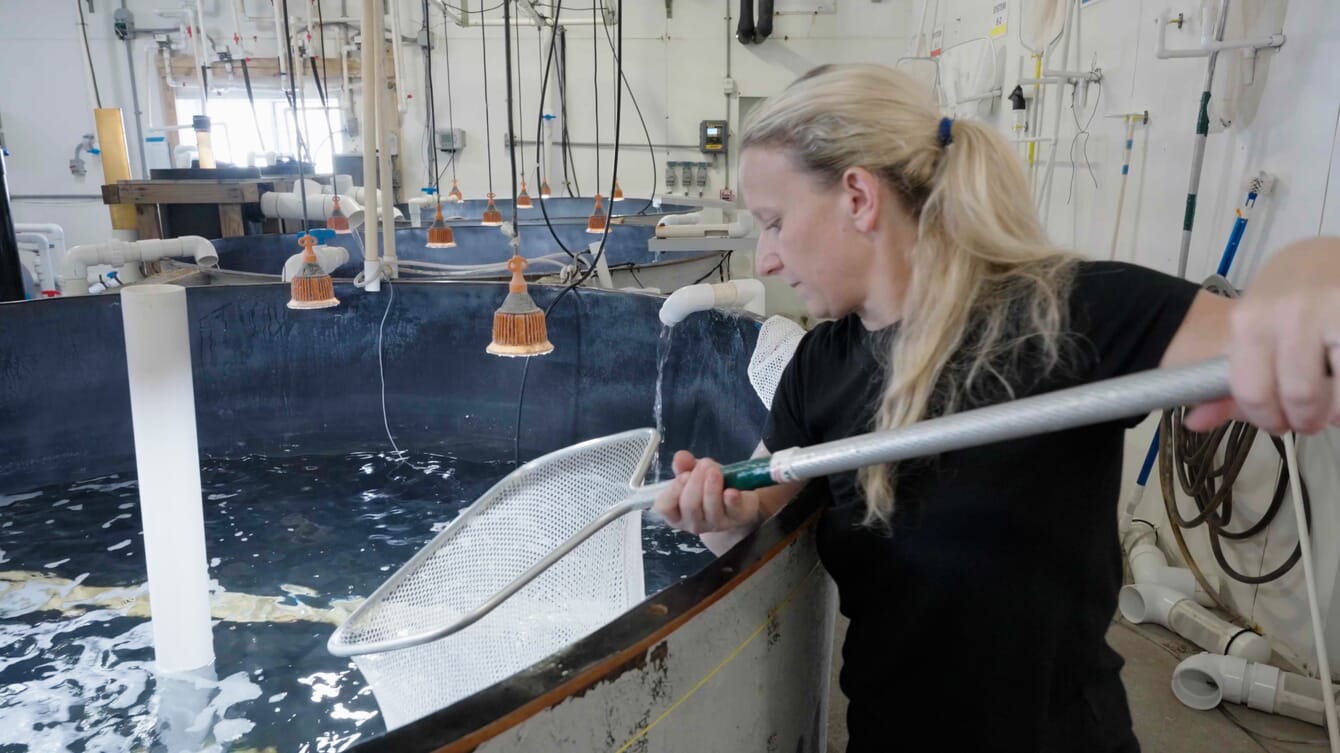
The company will manage their own breeding programme by producing fingerlings from their own broodstock, which will help them improve the performance of red drum in RAS facilities © Pine Island Redfish
A CEO’s perspective
I recently spoke about the Pine Island Redfish project with Megan Sorby, who is the founder and CEO. She previously led Kingfish Maine as operations manager for the last four years. Together with her team at Kingfish Maine, Sorby helped secure the required permits for the Netherlands-based company to expand in the US, develop a hatchery facility, and increase their US broodstock numbers. In November, Sorby hired the former Kingfish CEO, Ohad Maiman, as chairman of Pine Island Redfish.
Q: Will you produce your own fingerlings?
A: “Pine Island Redfish will produce fingerlings from the company’s own broodstock. Particularly within the development of marine species, we have so much efficiency to gain in better understanding and specific management of our breeding programme. These efficiencies can help us improve performance of these species in RAS and really in aquaculture settings in general.”
Q: Do you anticipate access to sufficient feed supplier options?
A: “It is safe to say that the aquaculture sector as a whole, and specifically in the US, does not have enough feed supplier options. Yes, there are great feed suppliers out there, and we are excited to work with multiple ones to achieve optimal nutrition for our fish. However, this is another area for significant growth and improvement, so it would be great if all these feed companies had manufacturing facilities in the US to support growth of the sector.
“This speaks to a larger need for US aquaculture, which is improved support infrastructure. Better access to feed mills, options for equipment, sites with ready access to normal demands of power, water supply, and experienced operators are all areas we need to focus on improving, so growth can happen in reasonable timeframes and at reasonable upfront costs.”
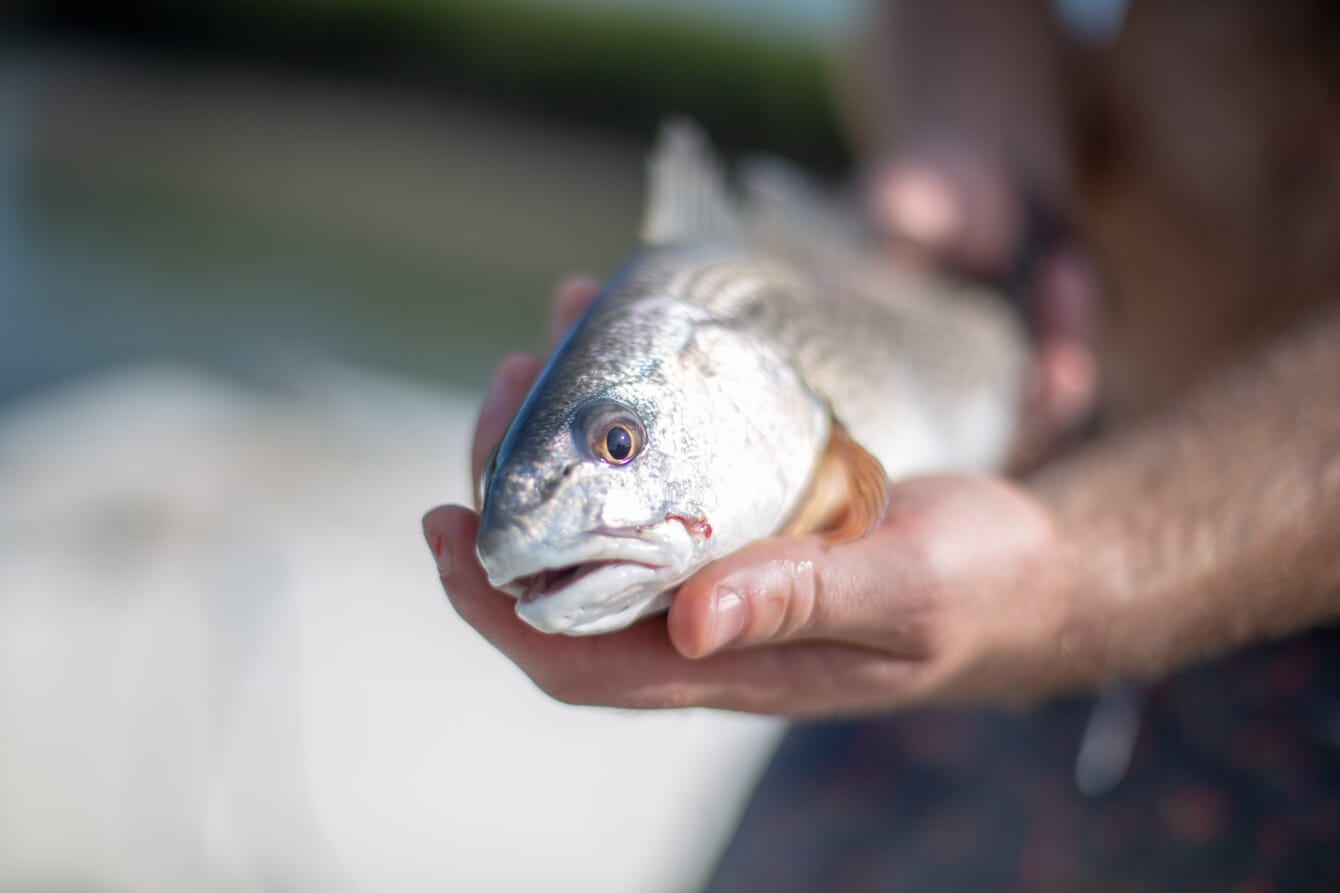
Growing red drum in RAS allows the company to cultivate the marine fish in a way that upholds the goals of maintaining the environment while bringing a domestic product to market in the most efficient culture process possible
Q: I was surprised by some of the places exporting red drum to the US. What do you foresee in terms of markets?
A: “The US seafood market is one of the largest, most complex, but also most interesting. It drives global trends in seafood production, whether in wild capture fisheries or aquaculture production. Pine Island Redfish has the opportunity to demonstrate what we so often state the goal of the aquaculture sector is: to bring seafood production closer to the end user, to lessen the impact on wild capture fisheries, and to diversify our access to quality seafood.”
Q: What led you to focus on red drum?
A: “Red drum is native to our shores and thus was historically from domestic sources. It was so valued for its clean taste and ease of preparation that the wild fishery could not support the demand and thus the species had to be protected. This achieved environmental success, bringing the species back from the brink, but also created a lucrative sportfishing industry, supporting thousands of jobs and bringing millions of dollars of tourism across the Gulf coastal and Atlantic states. However, these environmental and economic gains have forced us to only source this fish from abroad. Pine Island Redfish brings our native fish home, back to domestic production. Doing it in RAS allows us do it in a way that upholds those goals of maintaining the environment while bringing a domestic product to market in the most efficient culture process possible.
“Red drum is extremely versatile in its preparation. Made famous by chef Paul Prudhomme and his recipe for blackened redfish, it is fantastic grilled whole, baked, pan fried, or even crudo or ceviche. It is a fish that has a place in the kitchen of Michelin star restaurants but is not so intimidating that the home chef cannot feel confident cooking it for the family. And for us, that is the goal – across multiple platforms from food service to retail – this great fish makes it to more plates.”
Q: In terms of risk management, what lessons would you share with those contemplating taking the plunge into RAS?
A: “In RAS, and really any form of farming, the greatest mitigation of risk is in a strong operations team and a robust training programme. Experience is critical for the core members of the team, but most importantly, so is ensuring that the team members know their value to the operation and can impart their knowledge to the rest of the team so that everyone can troubleshoot: everyone can answer an alarm from the monitoring systems; everyone can grade a fish; everyone understands all aspects of the process, top to bottom.
“The biggest risk is segmentation of the process. Farms that operate well understand that each part of the process builds on the success of the part before. Good husbandry relies on well designed and well operated systems. Good product relies on attentive and meticulous husbandry, from egg to harvest. I have had great mentors along the way who have maintained this focus and taught me so much, and it continues to be a core principle.”

The company will utilise the natural geology in Florida to draw saltwater through wells, and repurpose the nutrients from their fish culture process to grow halophytic plants, such as red mangroves © Pine Island Redfish
Q: Within the US, Florida has set the standard for a streamlined yet science-based aquaculture permitting process with participation from multiple state agencies. Has environmental permitting and compliance been difficult for this project?
A: “Pine Island Redfish has received all required permits, and while it has required compiling a lot of information, we are grateful for the clear communication and well-defined best management practices established by the Florida Division of Aquaculture. This regulatory office has a tremendous amount of experience in the sector and thoroughly reviews applications. What is so helpful is that, through their review, they also work to connect you with any and every other agency that may have jurisdiction over your plans and ensure that you work through any of those applicable processes as part of achieving a certificate through their office. In a way, it makes sure that by achieving your aquaculture certificate, there is no stone unturned for any other permit you require.”
Q: It seems the Pine Island team knew exactly what they were looking for when they set out to find a site for their facility.
A: “Pine Island Redfish is designated a minimum impact aquaculture facility under FDAC’s BMPs. We highlight that we will utilise the natural geology in Florida to draw saltwater through wells, and repurpose the nutrients from our fish culture process to grow halophytic plants. We don’t require any in-water infrastructure, and through our waste management strategy, we are reducing our carbon footprint and energy requirements. It’s a pretty exciting process – if you’re interested in the potential of fish waste that is!”
As a long-time admirer of the species, I’m glad that red drum is finally getting a chance to demonstrate its potential for RAS production. And Megan Sorby obviously agrees.
“There’s deep US investment in the research and development of this species. Pairing red drum with RAS technology optimises this species to its fullest potential in a domestic location,” she concludes.
It’s a compelling argument.


